|
Seattle to New Orleans in June can be a real study in contrasts, from the cool cloudy Northwest to the steamy sunshine of the South. This trip in late June, however, started in brilliant sunshine in Seattle and ended in New Orleans under stormy skies! As usual, the Gallery of the Month has a wider selection of images from this trip, but here are a few I thought worth commenting on. Click on any one to enlarge it. 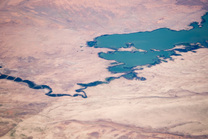 In the desert on the eastern side of the Cascades the vivid color of this small lake caught my eye. I'm sure the fact that it's quite close to the nuclear waste storage tanks at Hanford is just a coincidence... 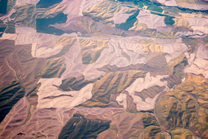 The dry-land farming region north of Walla Walla is a truly fascinating area, with very intriguing patterns of colors and shapes that beg for some kind of explanation. Whatever the reason the result is wonderfully abstract. 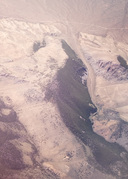 The desert can always be relied on to produce some interesting images, and this trip was no exception. Here over western Wyoming the vegetation on the side of a ravine looks like a carnival mask discarded on the desert floor. 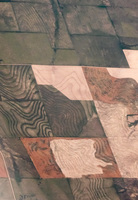 Back over agricultural land again, these cultivation patterns and crop/soil colors in eastern Colorado resemble the wood grain patterns of fresh-sawed lumber - somewhat ironic given the total absence of trees in these wide-open plains. It's also interesting to see the different approaches to cultivation in these fields. Some follow (to a greater or lesser degree) the patterns left by earlier contour-based planting, while straight-line fences cut right across others.  Clouds have always fascinated me, and the usual summer thunderstorms on the run into New Orleans didn't disappoint. This massive accumulation on the Texas-Louisiana border just seemed to keep climbing up to the sky, level upon level. 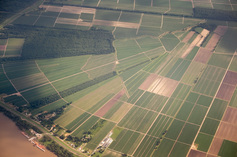 Field patterns often have historical as well as geological significance. Along the Mississippi towards New Orleans land grants were awarded based on a small, uniform length of river frontage to ensure equal access to shipping and irrigation water. The resultant long, thin landholdings thus became very crowded on the inside of the river's many turns!
1 Comment
|
AuthorJon Inge writes about his travels and the sights that have caught his eye. Archives
November 2018
Categories |

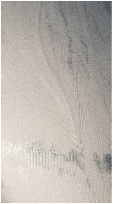
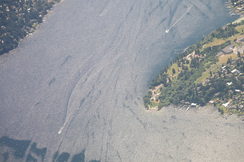

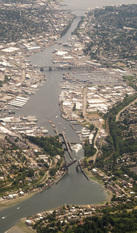
 RSS Feed
RSS Feed
